Abstract
A commercial, lamb and rice, dog food with an omega-6:omega-3 fatty acid ratio of 5.5:1 was fed in a single-blinded, self-controlled clinical trial to 18 atopic dogs. The pruritus in 8 of these dogs (44.4%) was satisfactorily controlled within 7 to 21 d, returned within 3 to 14 d after the diet was withdrawn, and was again controlled when the diet was reinstated. Plasma and skin levels of examined fatty acids changed in all 18 dogs when their diet was switched to the test diet. Dogs responding to the test diet had a different pattern of fatty acid change as compared to the dogs which failed to respond to the diet, suggesting that there are subsets of atopic dogs with different fatty acid metabolism capabilities.
Full text
PDF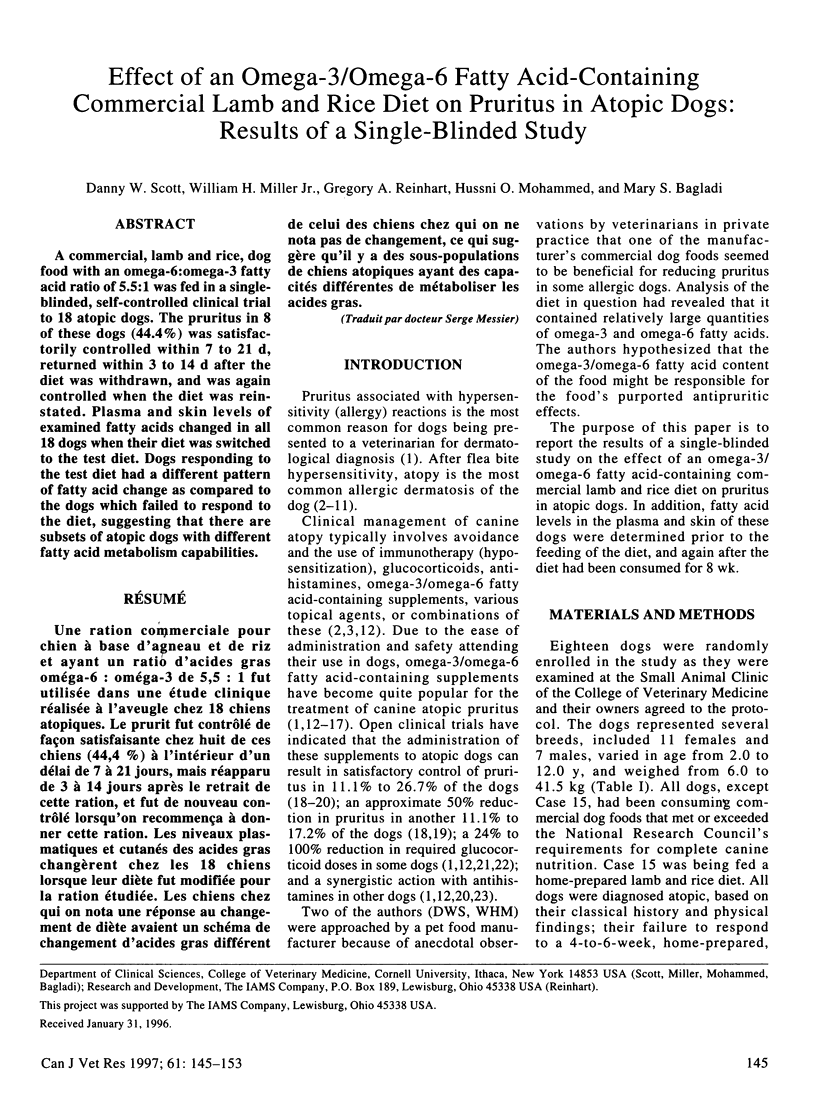
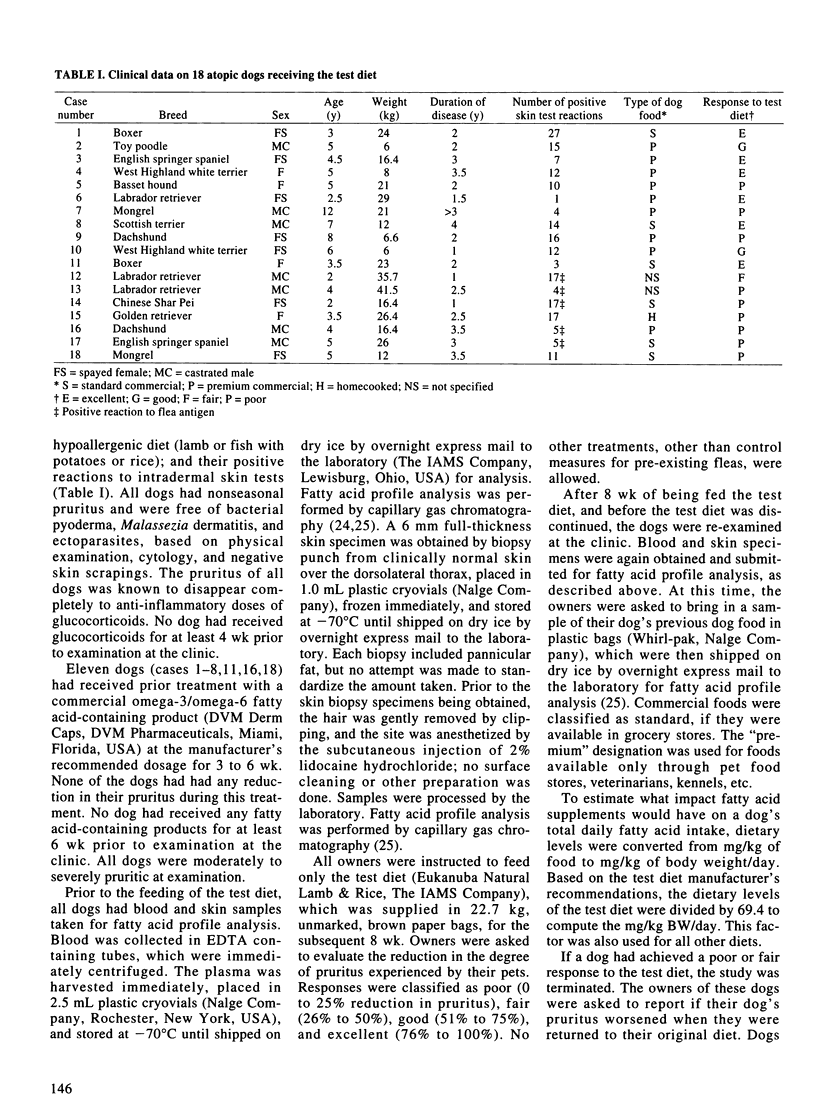
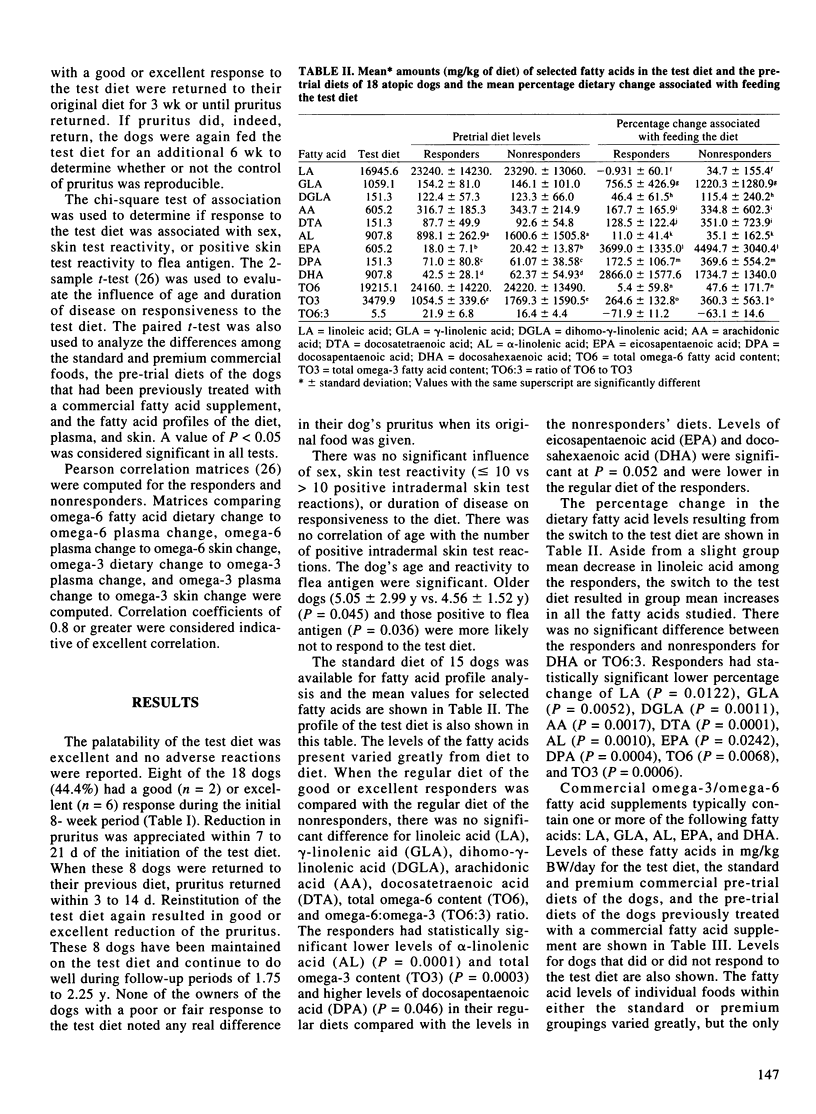
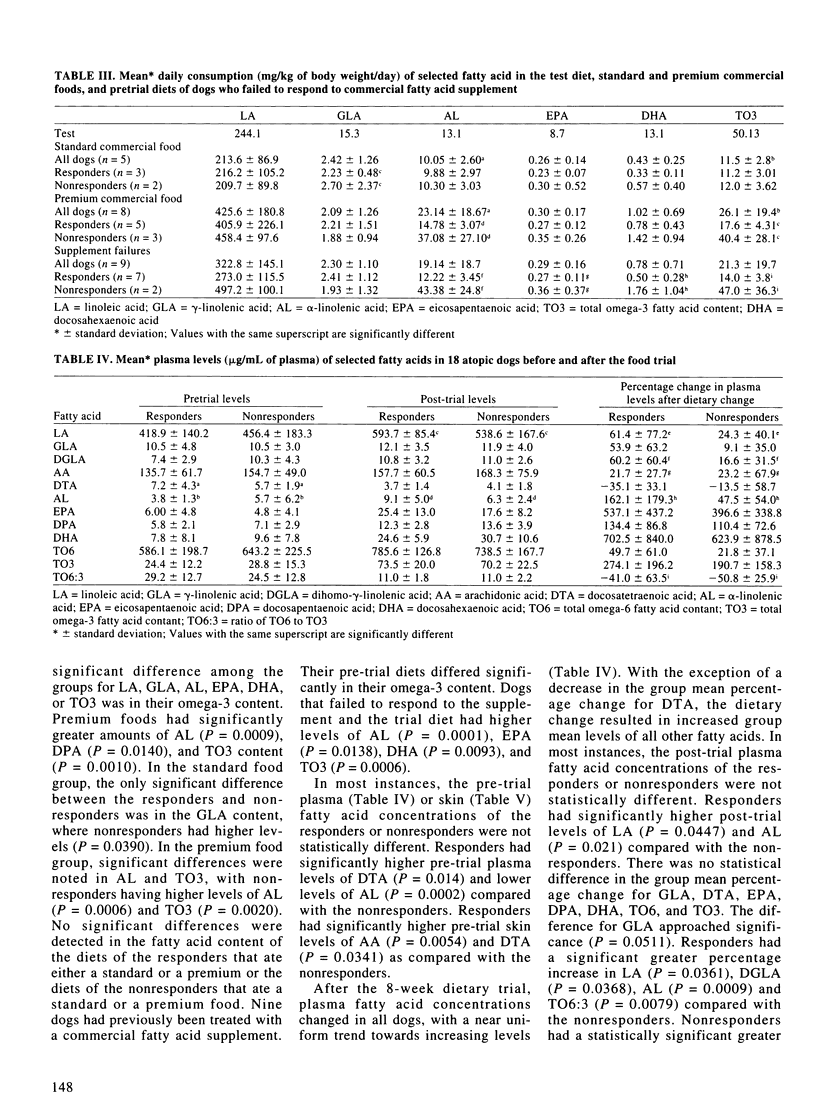

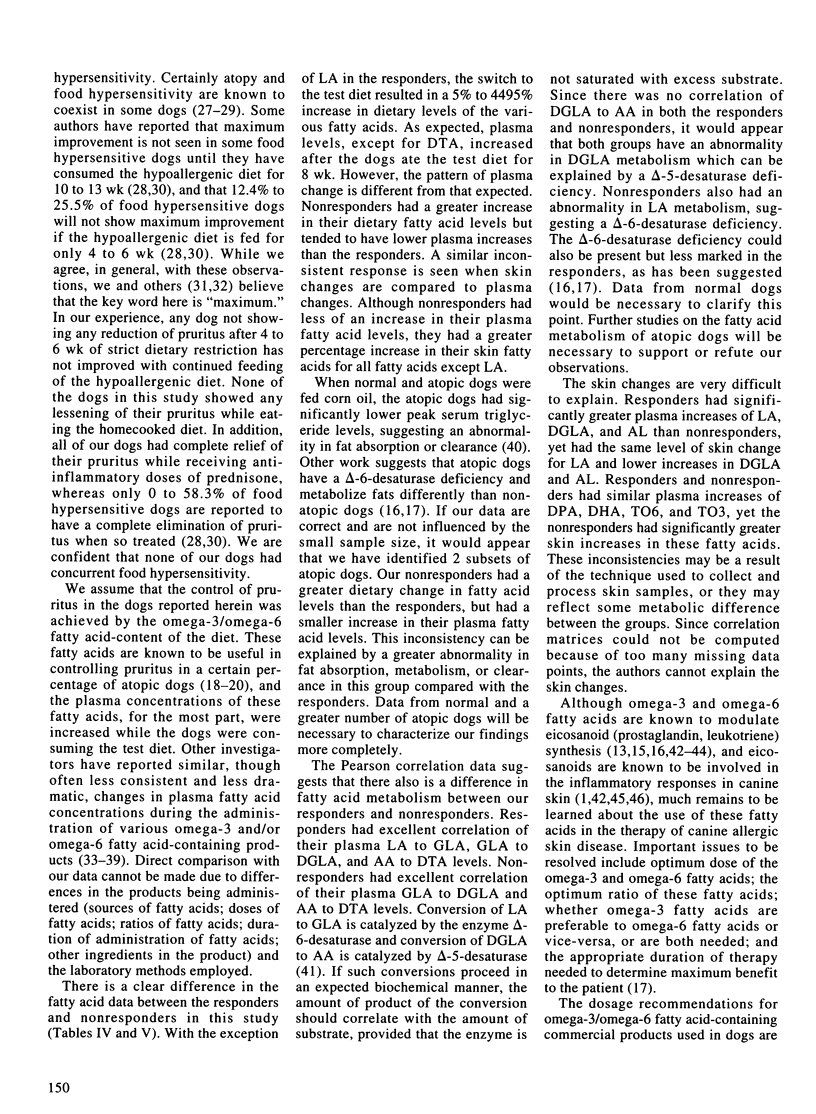
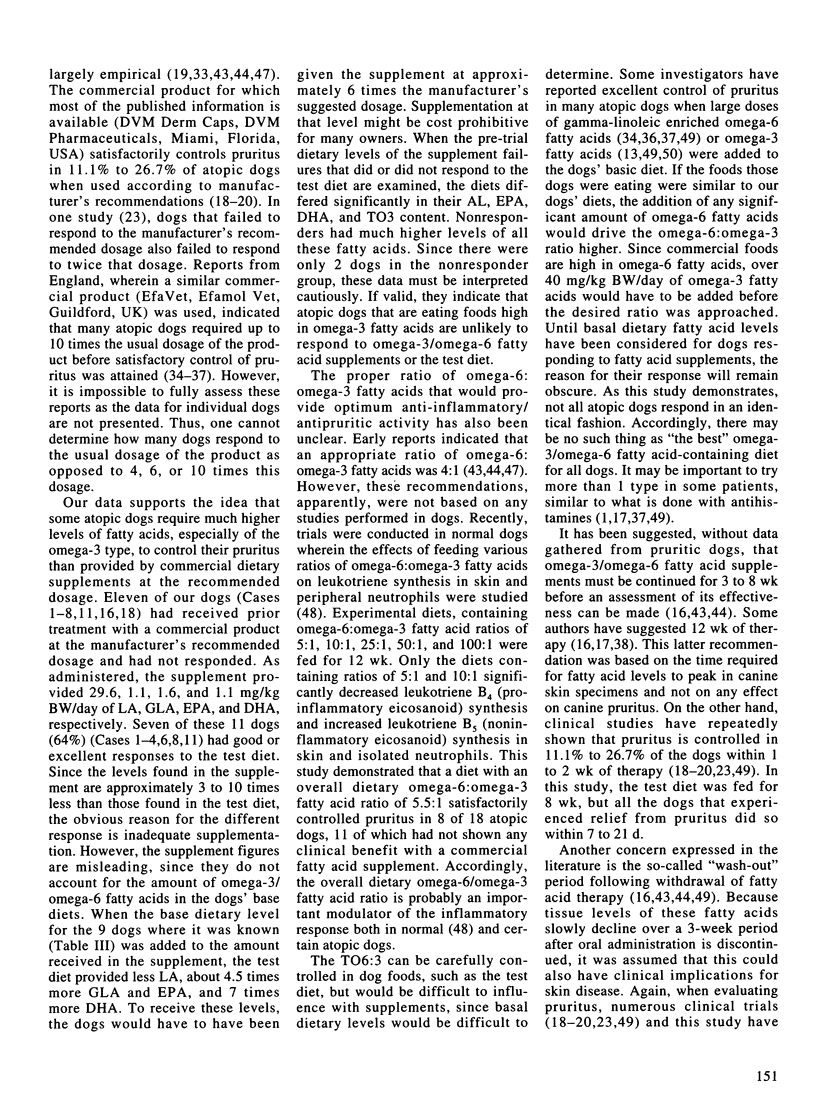
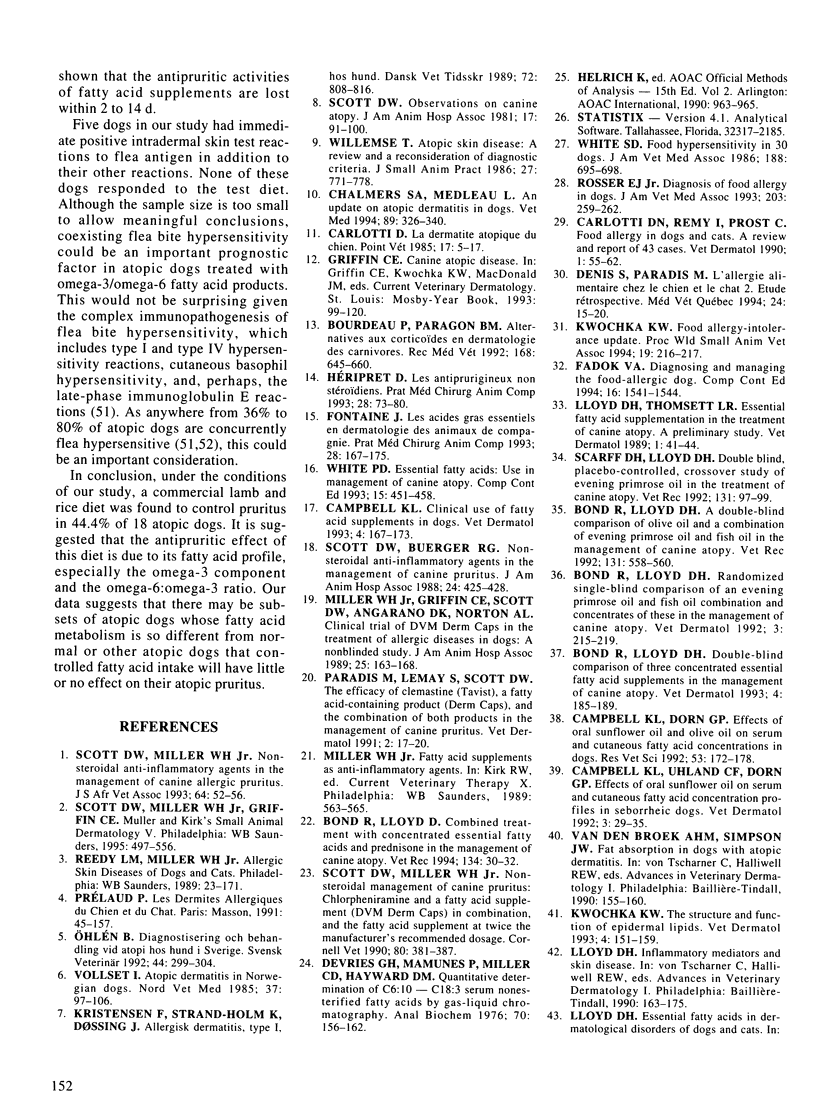
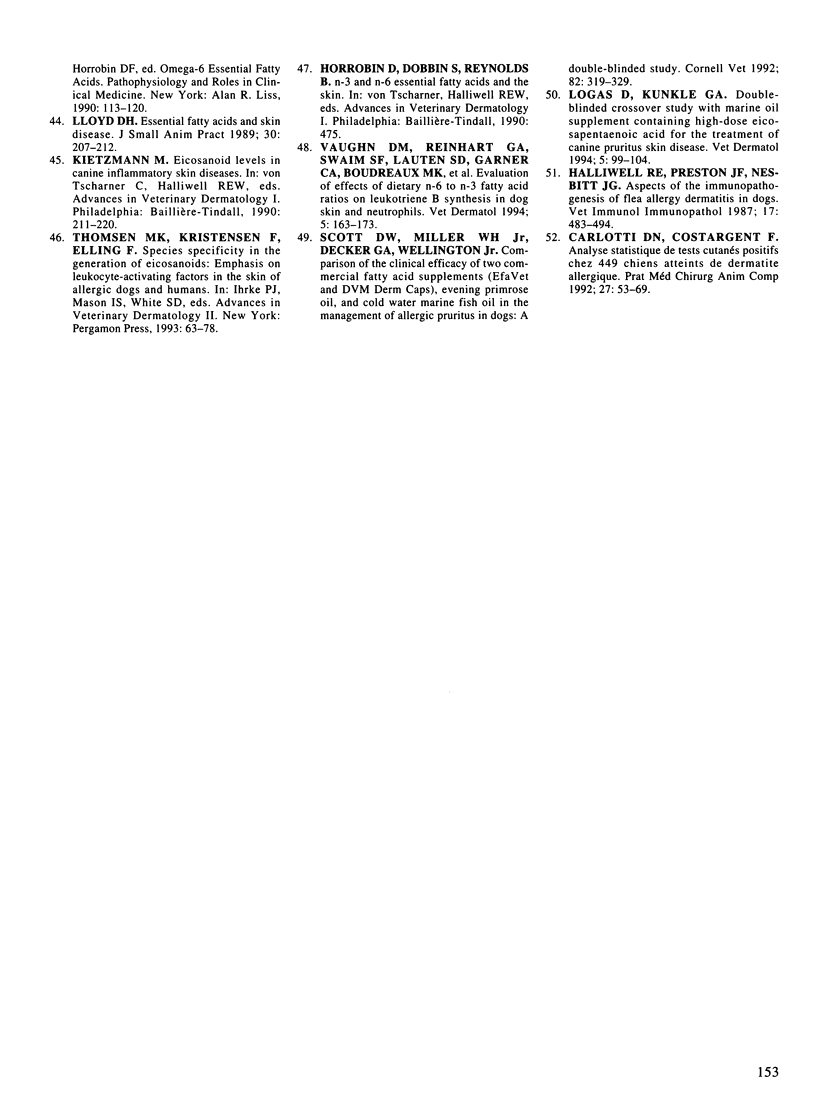
Selected References
These references are in PubMed. This may not be the complete list of references from this article.
- Bond R., Lloyd D. H. A double-blind comparison of olive oil and a combination of evening primrose oil and fish oil in the management of canine atopy. Vet Rec. 1992 Dec 12;131(24):558–560. [PubMed] [Google Scholar]
- Bond R., Lloyd D. H. Combined treatment with concentrated essential fatty acids and prednisolone in the management of canine atopy. Vet Rec. 1994 Jan 8;134(2):30–32. doi: 10.1136/vr.134.2.30. [DOI] [PubMed] [Google Scholar]
- Campbell K. L., Dorn G. P. Effects of oral sunflower oil and olive oil on serum and cutaneous fatty acid concentrations in dogs. Res Vet Sci. 1992 Sep;53(2):172–178. doi: 10.1016/0034-5288(92)90106-c. [DOI] [PubMed] [Google Scholar]
- DeVries G. H., Mamunes P., Miller C. D., Hayward D. M. Quantitative determination of C6:0-C18:3 serum nonesterified fatty acids by gas-liquid chromatography. Anal Biochem. 1976 Jan;70(1):156–166. doi: 10.1016/s0003-2697(76)80057-7. [DOI] [PubMed] [Google Scholar]
- Halliwell R. E., Preston J. F., Nesbitt J. G. Aspects of the immunopathogenesis of flea allergy dermatitis in dogs. Vet Immunol Immunopathol. 1987 Dec;17(1-4):483–494. doi: 10.1016/0165-2427(87)90164-4. [DOI] [PubMed] [Google Scholar]
- Rosser E. J., Jr Diagnosis of food allergy in dogs. J Am Vet Med Assoc. 1993 Jul 15;203(2):259–262. [PubMed] [Google Scholar]
- Scarff D. H., Lloyd D. H. Double blind, placebo-controlled, crossover study of evening primrose oil in the treatment of canine atopy. Vet Rec. 1992 Aug 1;131(5):97–99. doi: 10.1136/vr.131.5.97. [DOI] [PubMed] [Google Scholar]
- Scott D. W., Miller W. H., Jr, Decker G. A., Wellington J. R. Comparison of the clinical efficacy of two commercial fatty acid supplements (EfaVet and DVM Derm Caps), evening primrose oil, and cold water marine fish oil in the management of allergic pruritus in dogs: a double-blinded study. Cornell Vet. 1992 Jul;82(3):319–329. [PubMed] [Google Scholar]
- Scott D. W., Miller W. H., Jr Nonsteroidal anti-inflammatory agents in the management of canine allergic pruritus. J S Afr Vet Assoc. 1993 Mar;64(1):52–56. [PubMed] [Google Scholar]
- Scott D. W., Miller W. H., Jr Nonsteroidal management of canine pruritus: chlorpheniramine and a fatty acid supplement (DVM Derm Caps) in combination, and the fatty acid supplement at twice the manufacturer's recommended dosage. Cornell Vet. 1990 Oct;80(4):381–387. [PubMed] [Google Scholar]
- Tillett G., Tindall B. Discrimination in the provision of health care in relation to persons with infection with the human immunodeficiency virus. Med J Aust. 1990 Feb 19;152(4):220–220. doi: 10.5694/j.1326-5377.1990.tb125164.x. [DOI] [PubMed] [Google Scholar]
- Vollset I. Atopic dermatitis in Norwegian dogs. Nord Vet Med. 1985 Mar-Apr;37(2):97–106. [PubMed] [Google Scholar]
- White S. D. Food hypersensitivity in 30 dogs. J Am Vet Med Assoc. 1986 Apr 1;188(7):695–698. [PubMed] [Google Scholar]


